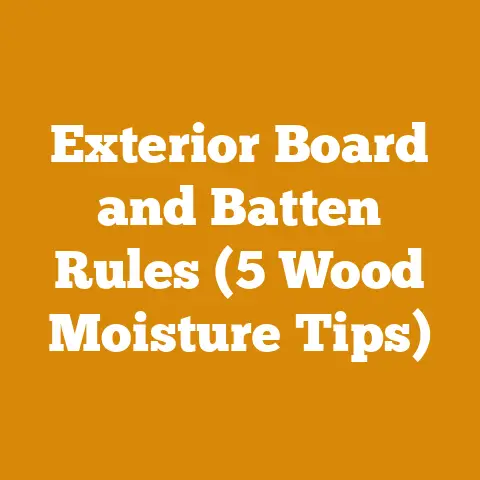Burn Pile Meaning (5 Expert Tips for Efficient Wood Disposal)
In recent years, I’ve noticed a growing trend in responsible land management and efficient wood waste disposal. More and more people are looking for sustainable ways to clear land, manage forest debris, and get rid of unwanted wood. This has led to a resurgence of interest in the age-old practice of controlled burning, specifically, the creation and management of burn piles. But what exactly does “burn pile meaning” encompass, and how can you ensure you’re doing it efficiently and safely? Let’s dive into the world of burn piles, exploring their purpose, the best practices for building them, and, importantly, the cost considerations involved.
Burn Pile Meaning (5 Expert Tips for Efficient Wood Disposal)
A burn pile, at its core, is a controlled accumulation of woody debris and vegetation intended for burning. It’s a method for reducing unwanted organic material, clearing land, and managing forest health. However, the “meaning” goes beyond simply setting fire to a heap of wood. It encompasses responsible environmental stewardship, safety precautions, and a keen understanding of local regulations and ecological impact. My own experience has taught me that a well-managed burn pile can be an invaluable tool, but a poorly constructed or carelessly executed one can lead to disaster.
1. Understanding the Purpose and Regulations
Before even considering building a burn pile, it’s crucial to understand its purpose and comply with local regulations. The purpose can vary:
- Land Clearing: Removing brush, trees, and stumps to prepare land for construction or agriculture.
- Forest Management: Reducing wildfire risk by eliminating fuel loads (dead trees, branches, and leaf litter).
- Disease Control: Burning diseased trees or vegetation to prevent the spread of pathogens.
- Yard Waste Disposal: Getting rid of branches, leaves, and other organic debris from landscaping.
Regulations: This is where things get tricky. Burning regulations vary widely by location, often dictated by state, county, and even local fire districts. These regulations might cover:
- Permits: Many areas require a burn permit before you can light a fire. These permits often specify the permissible burning times, the size of the burn pile, and the required safety precautions.
- Burning Bans: During dry seasons or periods of high fire risk, burning bans are often put in place. Violating these bans can result in hefty fines and even legal action.
- Prohibited Materials: Some materials, such as plastics, tires, and treated wood, are almost always prohibited from being burned due to the toxic fumes they produce.
- Setback Distances: Regulations often specify how far a burn pile must be from buildings, property lines, and other flammable materials.
- Notification Requirements: You might be required to notify your local fire department or neighbors before you start burning.
Cost Considerations: Failure to comply with regulations can be expensive. Fines for illegal burning can range from a few hundred dollars to several thousand, depending on the severity of the violation. Moreover, you could be held liable for any damage caused by a fire that escapes control. Taking the time to research and comply with local regulations is a crucial investment in preventing costly mistakes. I remember one instance where a neighbor, eager to clear some land quickly, ignored the local burning ban. He ended up with a \$5,000 fine and a lot of explaining to do to the fire department.
Data: According to the National Interagency Fire Center (NIFC), human-caused wildfires, including those from escaped burn piles, account for a significant percentage of all wildfires each year. In 2023, human-caused fires accounted for 89% of all wildfires. The financial burden of fighting these fires is substantial, costing billions of dollars annually. This underscores the importance of responsible burning practices.
2. Building a Safe and Efficient Burn Pile
The construction of your burn pile is paramount for both safety and efficiency. Here’s a step-by-step guide:
- Location: Choose a location that is at least 50 feet away from any buildings, trees, or other flammable materials. Clear a 10-foot perimeter around the burn pile down to bare earth to prevent the fire from spreading. Avoid areas with dry grass or heavy brush.
- Size: Start small. A large burn pile can be difficult to control and may produce excessive smoke. I’ve found that a pile no larger than 10 feet in diameter and 6 feet high is a good starting point. You can always add more material as the fire burns down.
- Structure: The way you stack your wood will significantly impact how well it burns.
- Tinder: Start with a base of dry tinder, such as twigs, leaves, and paper.
- Kindling: Add small pieces of kindling on top of the tinder.
- Fuel Wood: Gradually add larger pieces of wood, stacking them in a way that allows for good airflow. A teepee or log cabin structure works well.
- Airflow: Leave gaps between the pieces of wood to allow for air to circulate. This will help the fire burn hotter and more efficiently.
- Moisture Content: Dry wood burns much better than wet wood. Allow your wood to dry for several months before burning it. This will also reduce the amount of smoke produced. Moisture meters are relatively inexpensive and can help you determine the moisture content of your wood. Aim for a moisture content below 20%.
Cost Considerations: While the materials for building a burn pile are usually free (the wood itself), the labor involved can be significant. If you’re clearing a large area, you might need to rent equipment, such as a skid steer or tractor with a grapple, to move the wood to the burn pile. Rental costs for this type of equipment can range from \$200 to \$500 per day, depending on the size and type of machine.
Data: Studies have shown that properly seasoned firewood (dried to a moisture content of 20% or less) releases significantly more heat and produces less smoke than unseasoned wood. According to the Environmental Protection Agency (EPA), burning seasoned wood can reduce particulate matter emissions by up to 70%. This not only makes your burn pile more efficient but also reduces its environmental impact.
3. Safety Precautions: A Non-Negotiable Aspect
Safety should be your top priority when dealing with burn piles. Here’s a checklist of essential safety precautions:
- Water Source: Have a readily available water source nearby, such as a garden hose connected to a water supply or several buckets of water.
- Tools: Keep a shovel, rake, and fire extinguisher on hand to control the fire.
- Supervision: Never leave a burn pile unattended. Designate a responsible person to monitor the fire at all times.
- Weather Conditions: Avoid burning on windy days or when the fire danger is high. Check the weather forecast before you start burning.
- Protective Gear: Wear appropriate protective gear, such as gloves, eye protection, and a long-sleeved shirt.
- Communication: Have a cell phone or other means of communication in case of an emergency.
- Firebreaks: Ensure that you have a wide firebreak (cleared area) around the burn pile to prevent the fire from spreading.
Cost Considerations: The cost of safety equipment is minimal compared to the potential cost of a fire getting out of control. A good quality fire extinguisher can cost around \$50, while a shovel and rake can be purchased for around \$30. These are essential investments in protecting yourself, your property, and the environment.
Data: The National Fire Protection Association (NFPA) reports that unattended cooking equipment is the leading cause of home fires. While this statistic refers to cooking fires, the principle applies to burn piles as well. Unattended fires are much more likely to escape control and cause damage.
4. Efficient Burning Techniques
Burning efficiently not only reduces the amount of smoke produced but also minimizes the time and effort required to dispose of the wood. Here are some techniques to maximize burning efficiency:
- Airflow Management: As mentioned earlier, airflow is crucial for efficient burning. Make sure there are plenty of gaps between the pieces of wood to allow air to circulate. You can also use a poker or other tool to stir the fire and improve airflow.
- Adding Fuel Gradually: Avoid overloading the burn pile with too much wood at once. Add fuel gradually as the fire burns down. This will help maintain a consistent temperature and prevent the fire from smoldering.
- Repositioning Wood: As the fire burns, reposition the wood to ensure that all sides are exposed to the flames. This will help the wood burn more completely.
- Drying Out Wet Wood: If you have some wet wood that you need to burn, try placing it around the edges of the burn pile to dry out before adding it to the flames.
- Using a Burn Barrel (with Caution): In some areas, burn barrels are permitted. These can help contain the fire and improve burning efficiency. However, burn barrels can also be dangerous if not used properly. Make sure the barrel is in good condition, has a screen to prevent sparks from escaping, and is placed on a non-flammable surface.
Cost Considerations: Investing in a good quality moisture meter can help you ensure that your wood is dry enough to burn efficiently. A moisture meter can cost anywhere from \$20 to \$100, depending on the features and accuracy. While this might seem like an unnecessary expense, it can save you time and effort in the long run by ensuring that you’re only burning dry wood.
Data: A study by the Biomass Energy Resource Center (BERC) found that using seasoned firewood in wood stoves can increase heating efficiency by up to 30%. While this study focused on wood stoves, the principle applies to burn piles as well. Burning dry wood is simply more efficient than burning wet wood.
5. Extinguishing the Burn Pile and Aftercare
Extinguishing the burn pile completely is just as important as building it safely. Here’s how to do it:
- Water Saturation: Use a hose or buckets of water to thoroughly saturate the ashes and embers. Make sure to extinguish any remaining hot spots.
- Stirring the Ashes: Use a shovel to stir the ashes and ensure that all of the embers are extinguished.
- Monitoring: Continue to monitor the area for several hours after you’ve extinguished the fire to make sure that it doesn’t reignite.
- Disposal of Ashes: Once the ashes are completely cool, you can dispose of them in a safe manner. Ashes can be used as a soil amendment in your garden, but be sure to check the pH level first.
Cost Considerations: Depending on the size of your burn pile, extinguishing it can require a significant amount of water. If you’re on a well, you might need to consider the cost of pumping water. In some areas, water restrictions might be in place during dry seasons, so you might need to plan accordingly.
Data: According to the U.S. Forest Service, embers can remain hot for several days after a fire has been extinguished. This underscores the importance of thoroughly saturating the ashes and monitoring the area for any signs of reignition.
The Financial Breakdown: Cost Factors in Burn Pile Management
Now, let’s delve deeper into the financial aspects of burn pile management. As I mentioned earlier, the costs can vary significantly depending on the scale of your project and the resources you have available. Here’s a breakdown of the key cost factors:
Material Costs
- Wood: The primary material for your burn pile is, of course, wood. If you’re clearing your own land, the wood is essentially “free” in the sense that you’re not directly purchasing it. However, there’s an opportunity cost involved. Instead of burning the wood, you could potentially sell it as firewood or lumber. The price of firewood varies depending on your location, but you can typically expect to get around \$200-\$400 per cord for seasoned firewood. The price of lumber depends on the species and grade of the wood, but high-quality hardwoods can fetch several dollars per board foot.
- Tinder and Kindling: While these materials are usually readily available for free, you might need to purchase them if you don’t have a ready supply. A bundle of kindling can cost around \$5-\$10, while a bag of fire starter can cost around \$10-\$20.
- Water: As mentioned earlier, water is essential for extinguishing the burn pile. If you’re on a well, the cost of pumping water is relatively low. However, if you’re on a municipal water system, you’ll need to factor in the cost of water usage. The average cost of water in the United States is around \$1.50 per 1,000 gallons.
Labor Costs
- Your Own Labor: If you’re building and managing the burn pile yourself, the labor is essentially “free” in the sense that you’re not paying someone else to do it. However, you should still factor in the value of your time. How much is your time worth per hour? This will help you determine whether it’s more cost-effective to do the work yourself or hire someone else.
- Hired Labor: If you’re hiring someone to build and manage the burn pile, you’ll need to factor in their hourly rate. The cost of labor can vary depending on the experience and skill level of the worker, but you can typically expect to pay around \$20-\$50 per hour.
Equipment Costs
- Chainsaw: A chainsaw is essential for cutting and processing the wood for the burn pile. The cost of a chainsaw can range from \$100 for a small electric chainsaw to \$1,000 or more for a professional-grade gas-powered chainsaw.
- Skid Steer or Tractor: If you’re clearing a large area, you might need to rent a skid steer or tractor to move the wood to the burn pile. Rental costs for this type of equipment can range from \$200 to \$500 per day, depending on the size and type of machine.
- Moisture Meter: A moisture meter can help you ensure that your wood is dry enough to burn efficiently. A moisture meter can cost anywhere from \$20 to \$100, depending on the features and accuracy.
- Safety Equipment: As mentioned earlier, safety equipment is essential for protecting yourself and others. The cost of safety equipment, such as gloves, eye protection, and a fire extinguisher, is relatively low compared to the potential cost of a fire getting out of control.
Permit Costs
- Burn Permits: Many areas require a burn permit before you can light a fire. The cost of a burn permit can vary depending on your location, but it’s typically around \$10-\$50.
Disposal Costs
- Ash Disposal: Once the ashes are completely cool, you can dispose of them in a safe manner. If you’re using the ashes as a soil amendment in your garden, there’s no disposal cost. However, if you’re disposing of the ashes in a landfill, you’ll need to factor in the cost of disposal fees. Landfill disposal fees typically range from \$30 to \$70 per ton.
Case Studies: Real-World Cost Examples
To illustrate the cost factors involved in burn pile management, let’s look at a few real-world case studies:
Case Study 1: Small-Scale Yard Waste Disposal
- Scenario: A homeowner wants to dispose of branches, leaves, and other organic debris from landscaping.
- Materials: Free (yard waste)
- Labor: Self (5 hours)
- Equipment: Chainsaw (owned), shovel (owned), rake (owned)
- Permit: Not required
- Disposal: Ashes used as soil amendment
- Total Cost: \$0 (excluding the value of the homeowner’s time)
Case Study 2: Medium-Scale Land Clearing
- Scenario: A landowner wants to clear a 1-acre lot of brush and trees to prepare it for construction.
- Materials: Free (brush and trees)
- Labor: Hired (40 hours at \$30 per hour = \$1,200)
- Equipment: Chainsaw (owned), skid steer (rented for 2 days at \$300 per day = \$600)
- Permit: Required (\$25)
- Disposal: Ashes disposed of in landfill (1 ton at \$50 per ton = \$50)
- Total Cost: \$1,875
Case Study 3: Large-Scale Forest Management
- Scenario: A logging company wants to reduce wildfire risk by eliminating fuel loads (dead trees, branches, and leaf litter) on a 100-acre tract of land.
- Materials: Free (fuel loads)
- Labor: Logging crew (200 hours at \$40 per hour = \$8,000)
- Equipment: Chainsaws (owned), tractor (owned), bulldozer (rented for 5 days at \$500 per day = \$2,500)
- Permit: Required (\$100)
- Disposal: Ashes left on site
- Total Cost: \$10,600
These case studies illustrate how the cost of burn pile management can vary depending on the scale of the project and the resources available.
Tips for Cost Optimization and Budget Management
Here are some practical tips for cost optimization and budget management in burn pile management:
- Plan Ahead: The more planning you do upfront, the better you’ll be able to estimate costs and avoid unexpected expenses.
- Get Multiple Quotes: If you’re hiring someone to do the work, get multiple quotes from different contractors to ensure that you’re getting the best price.
- Consider Alternative Disposal Methods: Burning is not always the most cost-effective or environmentally friendly disposal method. Consider alternative methods, such as chipping or composting, if they are feasible.
- Maximize Efficiency: Use efficient burning techniques to minimize the amount of time and effort required to dispose of the wood.
- Maintain Your Equipment: Regularly maintain your equipment to prevent breakdowns and costly repairs.
- Monitor Your Costs: Track your costs throughout the project to ensure that you’re staying within budget.
- Season Your Wood: Whenever possible, prioritize burning seasoned wood. This reduces smoke and burns far more efficiently.
- Check Moisture Content: Use a moisture meter to ensure optimal burn conditions.
Calculations and Formulas
Here are some relevant calculations and formulas that can be helpful in burn pile management:
- Volume of a Burn Pile: The volume of a burn pile can be estimated using the formula: V = (π/3) * h * r^2, where V is the volume, h is the height of the pile, and r is the radius of the pile.
- Moisture Content: The moisture content of wood can be calculated using the formula: MC = ((Ww – Wd) / Wd) * 100%, where MC is the moisture content, Ww is the wet weight of the wood, and Wd is the dry weight of the wood.
- Firewood Volume (Cords): The volume of firewood is often measured in cords. A cord is a stack of wood that is 4 feet high, 4 feet wide, and 8 feet long, for a total volume of 128 cubic feet.
Challenges Faced by Small-Scale Loggers and Firewood Suppliers
Small-scale loggers and firewood suppliers often face unique challenges in managing burn piles. These challenges include:
- Limited Resources: Small-scale operators often have limited financial resources and equipment, making it difficult to manage burn piles efficiently.
- Regulatory Compliance: Complying with local burning regulations can be time-consuming and expensive, especially for small-scale operators.
- Market Fluctuations: The price of firewood can fluctuate significantly, making it difficult for firewood suppliers to budget for burn pile management.
- Competition: Small-scale operators often face stiff competition from larger companies, making it difficult to make a profit.
Actionable Takeaways and Next Steps
If you’re planning a wood processing or firewood project that involves burn piles, here are some actionable takeaways and next steps:
- Research Local Regulations: Start by researching the local burning regulations in your area. This will help you avoid costly fines and legal problems.
- Develop a Budget: Create a detailed budget that includes all of the anticipated costs, such as materials, labor, equipment, and permits.
- Choose the Right Equipment: Select the right equipment for the job, taking into account the size and scale of your project.
- Prioritize Safety: Always prioritize safety when working with burn piles. Wear appropriate protective gear and have a readily available water source nearby.
- Monitor Your Costs: Track your costs throughout the project to ensure that you’re staying within budget.
Conclusion: A Burning Passion for Responsible Wood Disposal
Understanding “burn pile meaning” and managing them effectively is a blend of science, safety, and responsible stewardship. While the costs involved can vary widely, careful planning, adherence to regulations, and a commitment to safety are essential for success. Remember, a well-managed burn pile is not just a way to get rid of unwanted wood; it’s a way to protect our environment and communities. From my own experiences, I can attest that the satisfaction of a job well done, knowing you’ve cleared land responsibly and minimized environmental impact, is a reward in itself. So, go forth, build your burn piles with knowledge and care, and let’s all contribute to a safer and more sustainable future.






